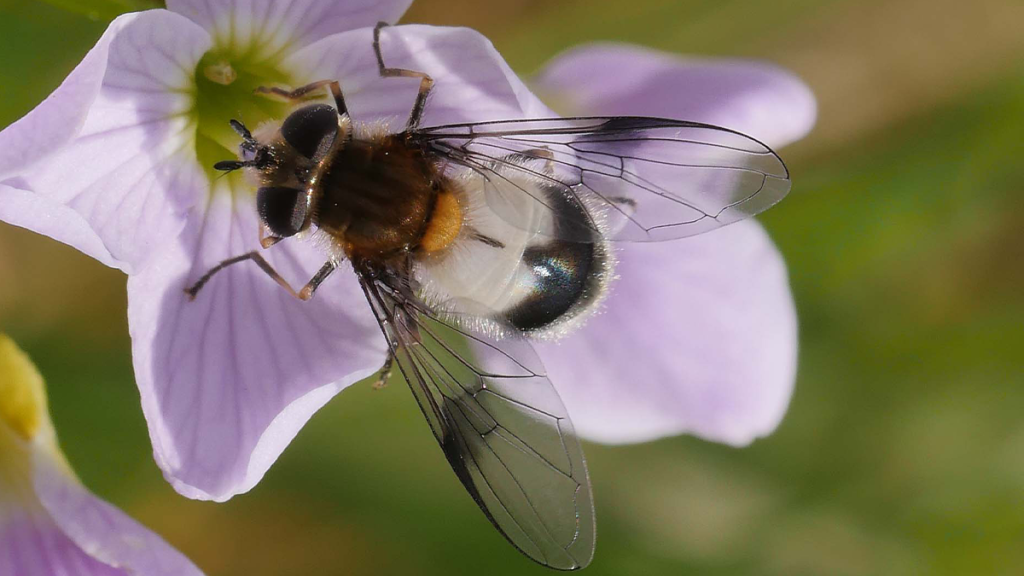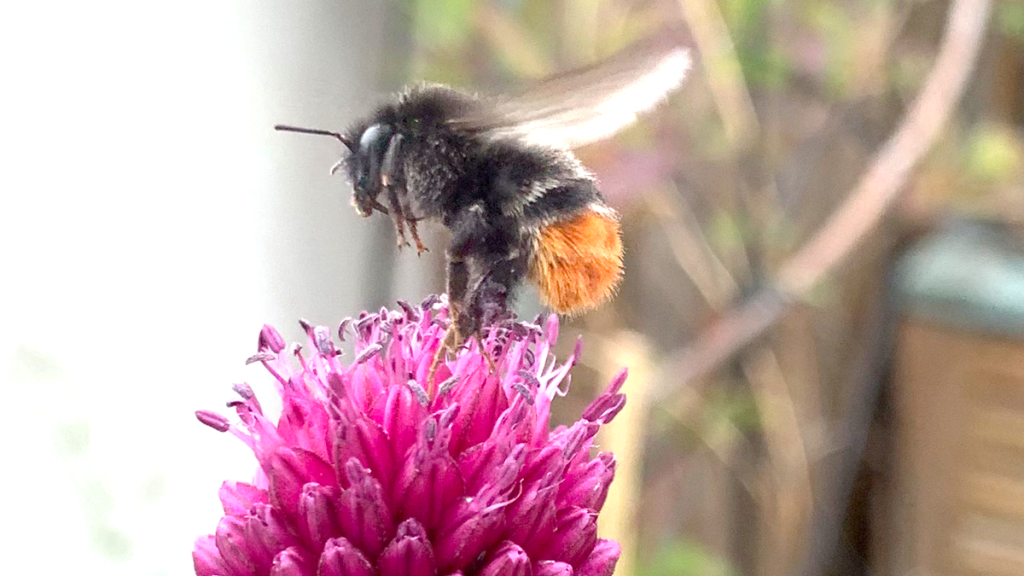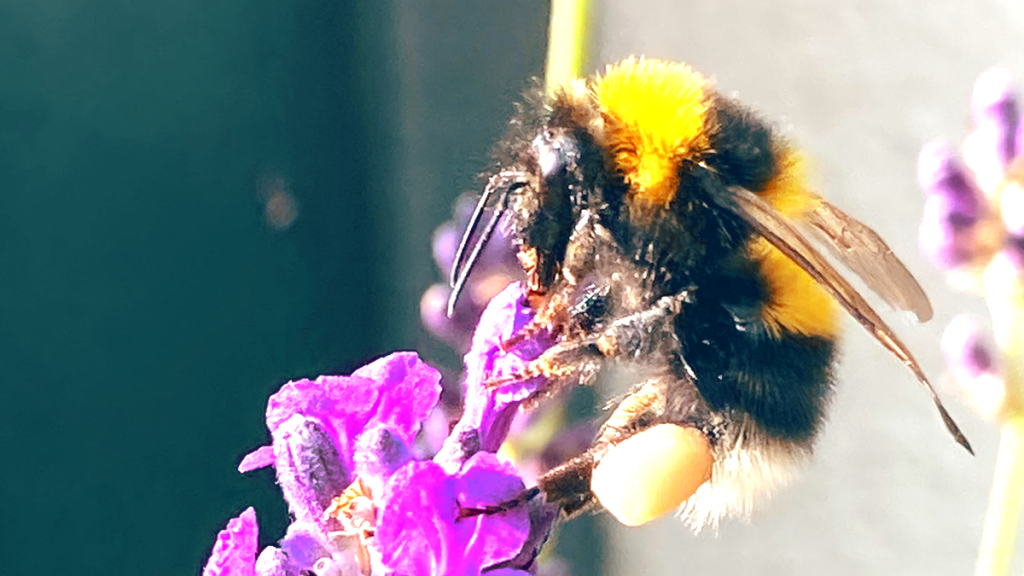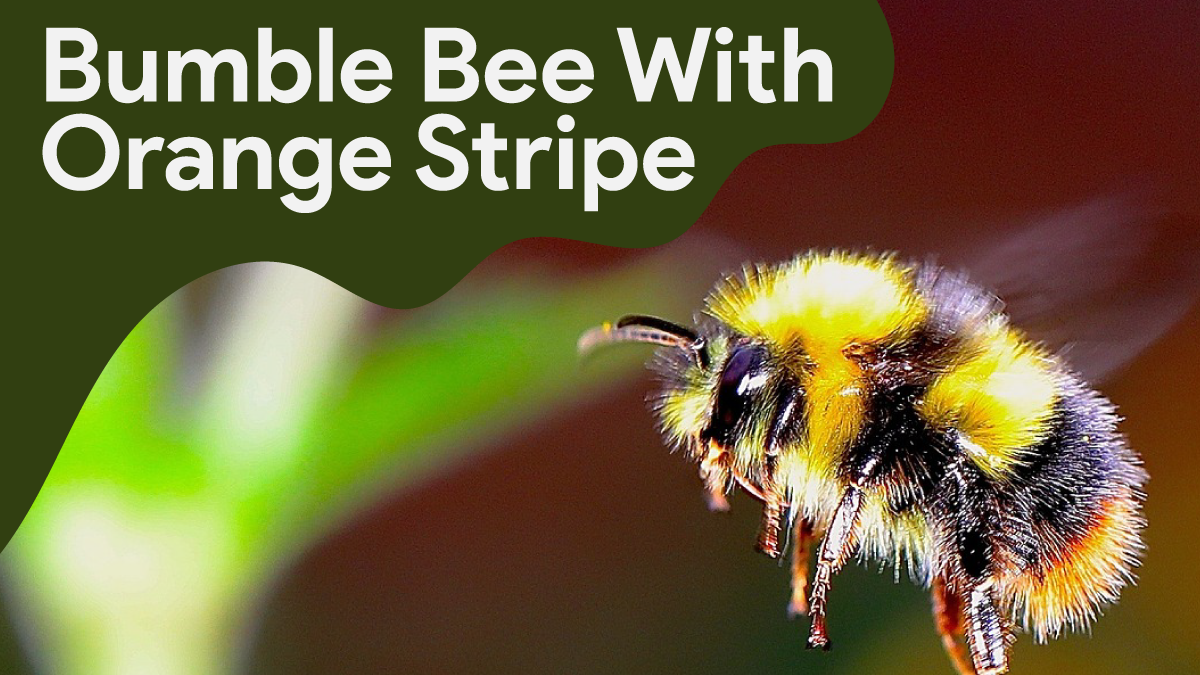Hunting honeybees with orange stripes or brown bellies is a great way to keep them in your garden.
It is common to colour bees with yellow and black/grey strips. It can differ slightly from yellow to black.
In this article, we will find about Bumble Bee with orange stripes, their types, characteristics, and habitats.
Table of Contents
Bumble Bee with orange stripe
People commonly encounter the Bumble Bee, adorned with an orange stripe across its thorax, in various regions worldwide.
These are highly distinguishable because of their vivid Orange and black patterns, which give them an undeniably striking appearance.
These industrious insects are vital to the survival of flora, be it in pollination or adding nutrients to our ecosystem.
Types of Bumble bees
Bumble bees are a vital part of the natural world, and there are many types.
The most common bumble bee is the Bombus territories, found in Europe and North America. Other species include:
- Bombus lucorum (the White-tailed Bumble Bee).

- Bombus lapidarius (the Red-tailed Bumble Bee).

- Bombus hortorum (the Garden Bumble Bee).

These have distinctive colour patterns on their bodies to help them blend into their environment. Each type of bumble bee has unique habits that make it well-suited for its particular habitat.
Characteristics of Bumble bees
Bumble bees are a type of bee that is known for their round, fuzzy bodies and black and yellow stripes.
They are essential in pollinating plants, as they feed on nectar from flowers while transferring pollen between them. Bumble bees are eusocial insects that live in colonies led by a queen bee at the helm. With a queen bee at the head of the territory.
They also possess potent wings, which allow them to fly quickly over long distances when searching for food or new habitats.
Orange-striped bumblebees can keep active even during colder temperatures by generating heat through their thyroids’ muscles.
Common characteristics of bumblebees are:
A. Social insects live in colonies with queen bees and worker bees.
B. Fuzzy appearance with a round body, often black and yellow or black and orange striped.
C. They Have a unique buzz-pollination method where they shake pollen loose from flowers with their wings.
D. Can fly in cool and damp weather, making them important pollinators for crops and wildflowers.
Habitat of Bumble Bee with orange stripe
The ubiquitous orange-striped bumble bees inhabit a myriad of habitats across the globe, ranging from meadows to forests and even urban areas.
These creatures typically construct their hives underground or within dark recesses, such as hollow logs and birdhouses.
The humble bumblebee is a typical inhabitant of temperate and polar regions, notably in the Northern Hemisphere. We can observe them in diverse environments, ranging from meadows to forests and savannahs., including:
- Grasslands: Bumblebees inhabit grasslands and fields, where they feed on the nectar of wildflowers and clovers.
- Forests: found in temperate and boreal forests, where they feed on flowering shrubs and trees.
- Mountains: we adapt some bumblebee species-altitude mountain habitats, where they provide alpine flowers.
- Urban Areas: we can also find bumblebees in urban areas, where they feed on flowers in gardens and parks.
Bumblebees prefer areas with a mix of flowers and nesting sites, such as grassy fields or areas with clumps of vegetation.
They build their nests underground in abandoned mouse burrows, bird nests, and the ground covered with grass or moss.
Lifecycle of Bumble Bees
Bumble bees are a species of bee that live in colonies and can be found worldwide. They have a unique lifecycle, starting with an egg laid by the queen bee.
The eggs then hatch into larvae, which feed on nectar and pollen from flowers to grow bigger until they form pupae. Finally, adult bumble bees emerge from their cocoons as fully formed adults, ready to start their colony!
The lifecycle of bumblebees comprises four stages:
- Egg: The queen bee lays eggs in a nest, usually in an underground burrow.
- Larva: After hatching, the larvae feed on a mixture of nectar and pollen provided by the workers.
- Pupa: After several moults, the larvae transform into pupae and spin cocoons.
- Adult: The pupae then emerge as adult bumblebees, either workers or new queens, depending on the species.
Throughout the summer, the colony continues to thrive, with workers engaged in foraging activities, taking care of juveniles and safeguarding their nests.
The colony declines in the fall, and the old queen and workers die. Only the new queens survive to mate and start new colonies the following spring.
Difference between male and female bumble bees
Male and female bumblebees have some physical differences, including:
- Size: Female bumblebees are more extensive than males.
- Antenna: Male bumblebees have longer antennae than females.
- Legs: Male bumblebees often have larger pollen baskets on their hind legs than female bumblebees.
- Colouring: Male bumblebees can have a brighter and more distinctive shade than females, often used to attract mates.
Functionally, female bumblebees lay pollen to feed the colony and care for the young. Males do not participate in nest maintenance and do not forage for food. Their primary function is to mate with the queen.
Do Orange belted bumble bees sting?
Orange belted bumble bees can sting, but they are not aggressive and usually only sting if they feel threatened.
Those close to these types of bees should take heed of their surroundings. You might get stung if you surprise them or come too close.
If a bee lands on you, remain calm and gently brush it away without swatting at them.
Bumble Bees with Orange Stripe, from Nest to Flower, is a book about how bees survive the winter. It is about their typical life divided into four stages: nesting, colony growth, foraging, and hibernation.
What kind of bee has orange and black stripes?
The honeybee (Apis Mellifera) is a social insect known for its distinctive colouring, comprising alternating black and orange or yellow bands.
They are essential pollinators for crops and wildflowers and live in organized colonies or hives. Honeybees play a critical role in our ecosystem and show the environment’s overall health.
Are bumble bees friendly?
Bumblebees are not aggressive towards humans and are unlikely to sting unless they feel threatened.
However, they will defend their nests if they feel it is necessary, so it is best to give them space and avoid disturbing them.
What happens if you get stung by a bumble bee?
A bumblebee sting can cause pain, redness, swelling, and itching. In some people, it may also cause an allergic reaction, which can be severe and potentially life-threatening.
Bumblebee stings contain venom that can cause immediate pain and swell at the sting site. Some people may also experience itching, hives, nausea, and difficulty breathing, which are signs of an allergic reaction.
If you are allergic to a bumblebee, seek medical attention immediately, as it can be severe and even life-threatening.
Summary
Bumble bee with orange stripe is nature-friendly species. If you get close to these tiny bees, avoid them and stay away since they’ll attack if you feel dangerous.
Might you be interested to know bees can fly at night? Check out this article for more details.
Related Articles
Exploring Can Bees Fly at Night
